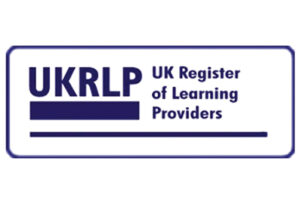Our team has taken several pro-active measures so we can continue to support our clients as many more businesses work remotely. We will continue to monitor the situation closely and take any additional steps required to provide a seamless service.
Conduct automated vulnerability assessments of internal and external vulnerabilities; triage and prioritize findings for remediation for clients.
The Qualys Policy Compliance scan runs through 4 principal phases:
It is worth noting that by default the Qualys Policy Compliance scan will retrieve data for all Controls - regardless of what, if any, a Policy might specify. It is only later, during the reporting phase, that data points for Controls are evaluated against Policies that the user defined.
Below is a flow-chart that illustrates the steps the scan engine goes through. Please click to enlarge.
We conduct internal and external penetration tests for clients to ascertain their security posture and comply with security frameworks such as PCI DSS, Cyber Essentials, and ISO 27001.
Conducting business on the Internet has become an essential requirement for almost every organization. However, those web applications are exposed to near-constant bombardment from entities looking to exploit vulnerabilities for malicious purposes. A frequent, in-depth security review of those applications is necessary to ensure that your critical assets are protected.
If your website has been hacked recently, review the recommended steps below to recover a hacked website and prevent future hacks.
To reduce the probability of future hack, take the following actions:
If you’re using WordPress, for example, ensure you’re on the most recent version of WordPress. CMS platforms push out updates to address known vulnerabilities. Always upgrade to the latest version when it becomes available.
If you’re using plugins or extensions on your website or CMS, keep them updated.
Customers on a paid Cloudflare plan can activate the WAF to challenge or block known malicious behavior.
Many hacks are due to brute force attacks on login pages. Review services like Rublon or Jetpack to help secure your site from attacks designed to target CMS platforms like WordPress.
If your site becomes hacked, avoid losing valid content by using a service like CodeGuard to restore your site from a backup.
We are working towards providing Basic Cyber Essentials certification, IASME Governance standard certification, and Cyber Essentials Plus certification for our clients in the UK.
Managing vulnerabilities involves a wide array of security testing, including both dynamic and static source code analysis. So what is the difference between static code analysis and dynamic code analysis? Is one method preferred over another in terms of security and performance?
Static and dynamic code analyses are performed during source code reviews. Static code analysis is done without executing any of the code; dynamic code analysis relies on studying how the code behaves during execution.
Regardless of where you fall in the merchant level definitions, completing your own thorough compliance checks in advance of a DSS compliance audit can save you both time and money. The PCI Security Standards Council has defined a comprehensive set of standards to enhance the security of cardholder data, at the center of which is the PCI DSS. Level 1 and 2 merchants are required to demonstrate DSS compliance with a QSA report (RoC), while Level 2-4 merchants must complete the self-assessment questionnaire (SAQ). However, the requirements can be confusing, which is why we developed the CyberSheath PCI Readiness Assessment.
CyberSheath’s PCI Readiness Assessment establishes baseline security controls in your business operations to ensure that compliance is achieved as efficiently as possible. Not only does this improve your cybersecurity and increase the likelihood of a successful audit, but it also helps to lower security admin and spending, enabling you to spend more on actual defense.
Our unique approach to PCI DSS compliance stems from our Measure Once, Comply Many™ ethos, which aims to guarantee compliance as a natural consequence of secure day-to-day operations.
What does a PCI Readiness Assessment involve?
A successful PCI Readiness Assessment entails an in-depth review of your existing infrastructure, applications, and policies. Activities include:
Remediation of Assessment Findings
Should your PCI Readiness Assessment identify areas of vulnerability or deficiency in your security operations, CyberSheath engineers will work with your team to develop a remediation plan according to your available resources.
Areas of focus include:
We support clients with pre-ISO 27001 certification readiness assessments.
Business continuity (BC) and disaster recovery (DR) are closely related practices that support an organization's ability to remain operational after an adverse event.
Resiliency has become the watchword for organizations facing an array of threats, from natural disasters to the latest round of cyberattacks.
In this climate, business continuity and disaster recovery (BCDR) has a higher profile than ever before. Every organization, from small operations to the largest enterprises, is increasingly dependent on digital technologies to generate revenue, provide services and support customers who always expect applications and data to be available.
"Mission-critical data has no time for down time," said Christophe Bertrand, a senior analyst who covers data protection for Enterprise Strategy Group (ESG), a market research firm in Milford, Mass. "Even for non-critical data, people have very little tolerance."
Disruption isn't just an inconvenience for customers. A fire, flood, ransomware attack or other malady can rack up financial losses, damage the corporate brand and, in the worst-case scenario, shutter a business permanently. About a third of the respondents to Uptime Institute's 2019 Global Data Center Survey reported having "business impacts" linked to some form of infrastructure in the past year. A bit more than 10% of the respondents said their most recent outage resulted in $1 million-plus in direct and indirect costs.
"These outages increasingly span multiple data centers, and best practices dictate comprehensive and ongoing resiliency reviews of all company-owned and third-party digital infrastructure," according to Uptime Institute, a Seattle-based data center standards organization.
The role of BCDR is to minimize the effects of outages and disruptions on business operations. BCDR practices enable an organization to get back on its feet after problems occur, reduce the risk of data loss and reputational harm, and improve operations while decreasing the chance of emergencies.
Some businesses might have a head start on BCDR. DR is an established function in many IT departments with respect to individual systems. However, BCDR is broader than IT, encompassing a range of considerations -- including crisis management, employee safety and alternative work locations.
A holistic BCDR approach requires thorough planning and preparation. BCDR professionals can help an organization create a strategy for achieving resiliency. Developing such a strategy is a complex process that involves conducting a business impact analysis (BIA) and risk analysis as well as developing BCDR plans, tests, exercises and training.
Planning documents, the cornerstone of an effective BCDR strategy, also help with resource management, providing information such as employee contact lists, emergency contact lists, vendor lists, instructions for performing tests, equipment lists, and technical diagrams of systems and networks.
BCDR expert and consultant Paul Kirvan noted several other reasons for the importance of BCDR planning:
Our Security Architecture Review & Design services, we work with clients to review their existing on-prem and cloud architectures for security gaps and provide advice to enhance the security of their network and system architecture.
We use our extensive experience to guide our clients in selecting the most optimal security solution for their on-prem and cloud infrastructure.
Do you feel stagnancy in your career growth, struggling to find a new job or switch careers? A career coach (career counselor or consultant), mentor, recruitment consultant or headhunter can help. A career coach, mentor or recruitment consultant support, motivate and provide encouragement. They listen to detect thoughts, feelings, and aspirations related to career decision-making. They also ask questions and provide feedback on clients’ strengths, insecurities, concerns, areas of need and career-related obstacles. They help clients develop goals and achieve a higher level of performance and satisfaction.
We help clients run phishing campaigns to improve security awareness of staff and third-parties.




